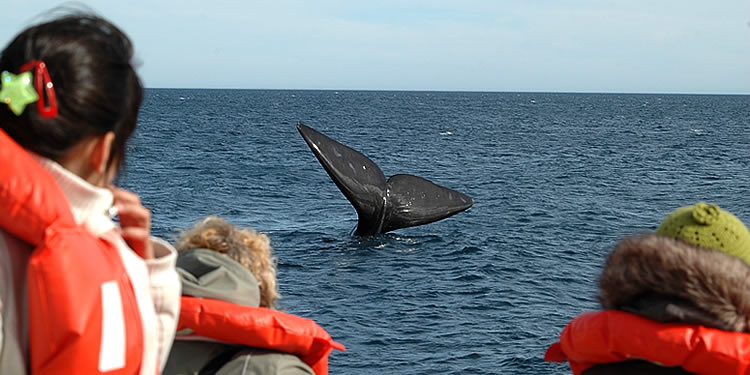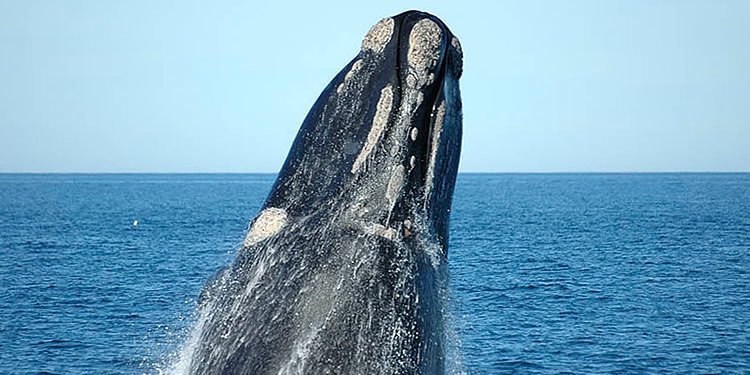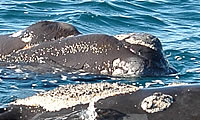Watching the southern right whale is one of the most awesome experiences man can have.
Considered endangered, the southern right whale gets its name from history and its vulnerable characteristics during capture. For such reason, the national government resolved to declare it Natural Monument in 1984.
As it is a very slow animal which floats once it is dead, unlike the rest of mammals, which must be injected air in order to avoid sinking, it has been named the "right whale" to hunt.

If we also consider the fact that a specimen equals 40 barrels of oil, which represents 7,200 liters, no wonder the name "right whale" is the most appropriate.
The right whale used to dwell in a wide strip ranging from 20º to 60º latitude in the North Pacific, the North Atlantic, the South Atlantic, the South Indian and part of the South Pacific. There are two kinds of right whale: one in the Northern hemisphere and one in the Southern hemisphere. Hence, their names.
The waters of our country are one of the few places these magnificent cetaceans choose to breed. Year after year, thousands of visitors are delighted with the jumps, the tails and the behavior displayed by these giants of the sea.


The right whale callosities are their most representative icons. They are the whales' fingerprints, which let us differentiate them from one another. Most of these callosities are located on the head, on the lips, on the jaw and on the eyes, though the most important ones are located on the tip of their muzzle.